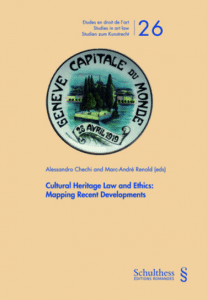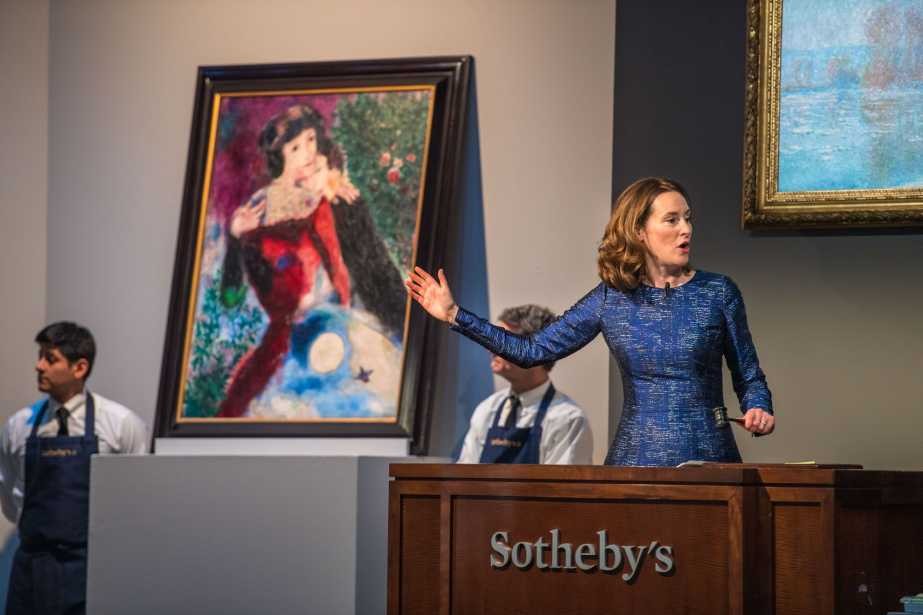 What does the "scores on doors" rating the hygiene of UK & US restaurants have to do with art provenance? Excerpted from faculty Gareth Fletcher’s chapter in Cultural Heritage Law and Ethics: Mapping Recent Developments (edited by Alessandro Chechi and Marc-André Renold and published by Shulthess), the following proposes new ways to think about compliance regulations, provenance, and consumer preference.
What does the "scores on doors" rating the hygiene of UK & US restaurants have to do with art provenance? Excerpted from faculty Gareth Fletcher’s chapter in Cultural Heritage Law and Ethics: Mapping Recent Developments (edited by Alessandro Chechi and Marc-André Renold and published by Shulthess), the following proposes new ways to think about compliance regulations, provenance, and consumer preference.
Download the full chapter “Scores on the Doors: Establishing a Certificate of Virtue Framework for Future Art Market Regulation,” including three case studies that trace the impact of provenance on sales results for major works at auction.
In the United Kingdom (UK), “Scores on the Doors” is a food hygiene and inspections compliance initiative governed by the Food Standards Agency (FSA) that acts as a grading system to evaluate the performance of businesses selling food to consumers; [there is an equivalent grading (from A to D) system employed in the United States]. It regulates the production, processing, distribution, retail, packaging and labelling of foodstuffs within the UK through the application of a formal grading system, where unannounced inspections of businesses culminate in an evaluation of the compliance standards upheld by individual food retailers. This public evaluation is presented on the door of the retailer as a number from one to five, with five indicating the highest level of compliance, and one indicating the lowest.
Applied to the art market, the “Scores on the Doors” framework has the potential to function as a similar compliance summary by identifying and evaluating participating organisations and objects in their possession. This analogous framework would seek to be established as a positive certificate of virtue, through which the presentation and elaboration of provenance information for objects transacted through an organisation could be evaluated and displayed for consumer review. As a plausible response to an evaluation and in order to maintain demand, the competition amongst market participants to achieve the maximum score of five has the potential to function as a consumer-driven market regulatory mechanism.
Objects bearing specific or nuanced provenance information will contribute towards a positive score on the door, sending a signal of best practice to the buyer market and to competing businesses. In a crowded marketplace, quality, integrity and reliability contribute to customer satisfaction and repeat sales, and it can be difficult for underperforming businesses to respond to consumer demand. Participation within the proposed framework will also provide an opportunity to measure shifting tastes and market demand for risk mitigation and increased transparency. Before examining the market appetite for provenance information, however, it is important to briefly identify the efficacy of existing regulatory frameworks in order to understand the benefits and limitations of imposing external value systems on the international trade in cultural objects.
In 2015, the British Art Market Federation identified 167 extant regulations applicable to the British art market, which incorporated examples from international, European Union and English law, professional Codes of Conduct and best practice guidelines. Challenges facing regulatory initiatives include difficulties in ensuring international enforcement of national guidelines and the establishment of a sophisticated, proactive and agile monitoring process that responds to the market fluctuations and idiosyncrasies unique to the cultural sector.
An important example in the UK is the Dealing in Cultural Objects (Offences) Act 2003, which prohibits the transaction of “tainted” objects; defined as those of “historical, architectural or archaeological interest”. The Act does not specifically require dealers to proactively obtain provenance information for objects within their possession, and they are liable for prosecution only for objects that they know or believe to conform to the “tainted” definition. As such, the obligation resides with the prosecution to prove that a dealer acted dishonestly in handling one of these objects, impeding its potency in regulating the cultural heritage trade within the UK.
Another important regulation governing the international trade is the United Nations Educational Scientific and Cultural Organisation (UNESCO) Convention on the Means of Prohibiting and Preventing the Illicit Import, Export and Transfer of Ownership of Cultural Property 1970, which prohibits the importation and exportation of cultural objects without legal importation and ownership history extending to 1970.
This framework identifies the importance of verifiable provenance in determining the current and future legitimacy of acquiring cultural objects that have the potential to enter the art market, and penalises or prohibits non-compliant actors and transactions. In this way, the legitimating effect of provenance from a legal, ethical and economic perspective is enshrined within these guidelines, and the impact of provenance on future consumer preference is central to the “Scores on the Doors” regulatory proposition.
Excerpted from: Fletcher, Gareth. "Scores on the Doors: Establishing a Certificate of Virtue Framework for Future Art Market Regulation." Studies in Art Law 26 (2017).
To download this chapter in its entirety, click here.
Gareth Fletcher is a Lecturer in the MA in Art Business Program at Sotheby’s Institute of Art-London. He is Co-Unit Leader of the Art Business, Foundations and Placement semester course, leader of the Art Crime and Art and its Markets summer study courses. He also lectures on Strategy and Risk Management as part of the Business Management in the Art World Executive Education program; Strategic Planning as part of the Business Management of an Art Gallery program, and the Contemporary Art Market as part of the Frieze Art Fair: Contemporary Art Today program. He has received a TECHNE AHRC scholarship to pursue his PhD examining the semiotics of provenance as institutional construct in the establishment of cultural and economic value in the market for Near Eastern antiquities. He received his MA, Sotheby's Institute of Art, London; his BFA and BA from University of Canterbury, New Zealand.
